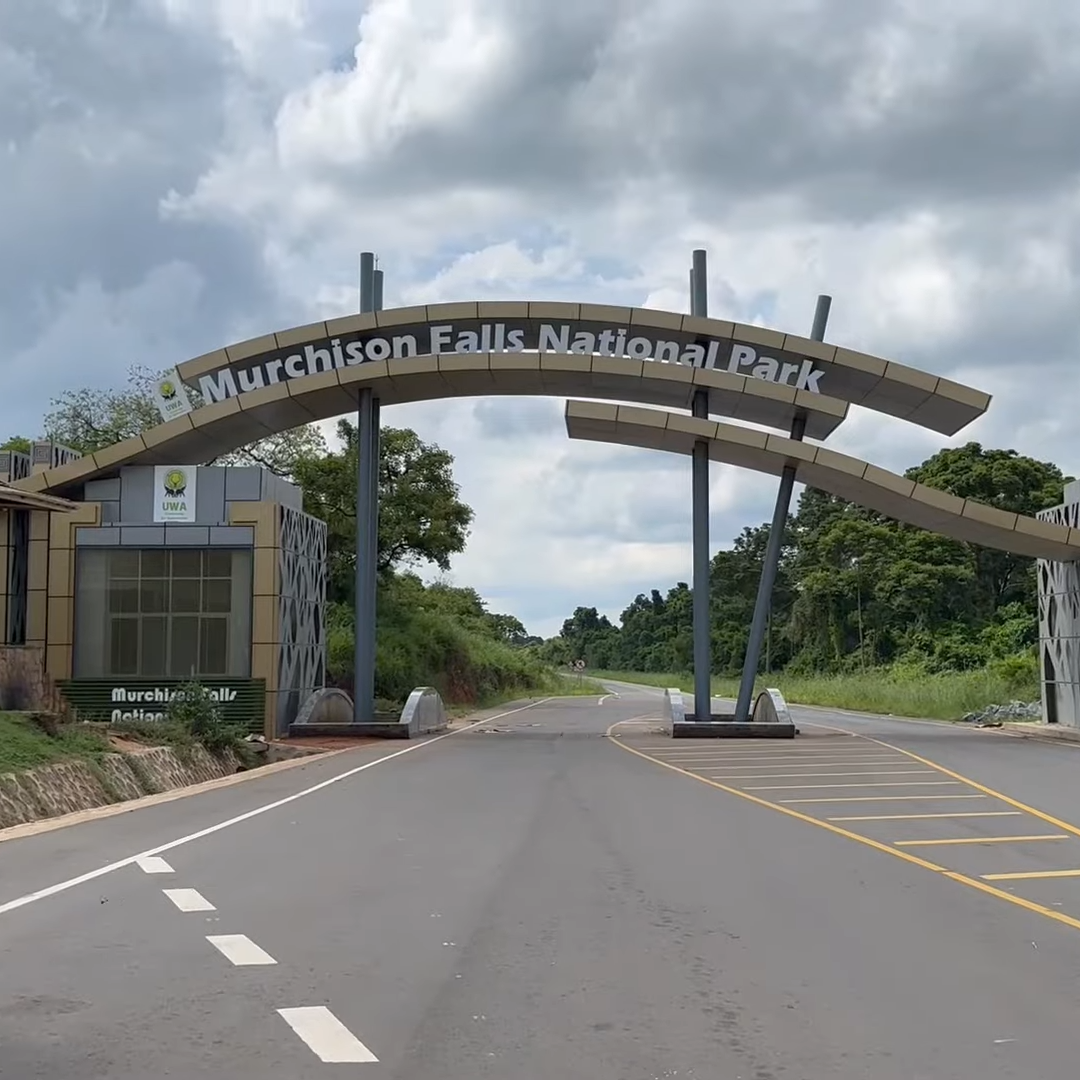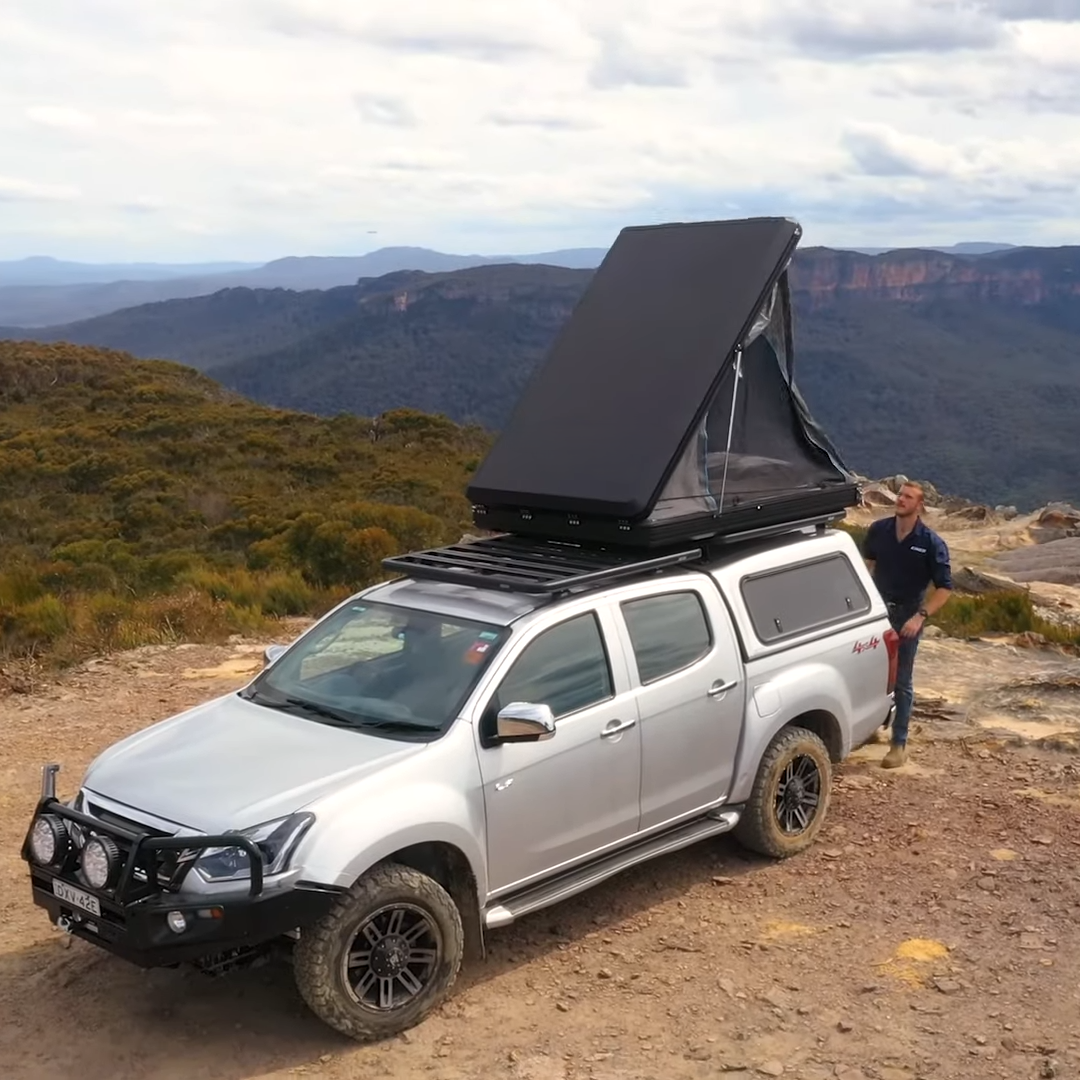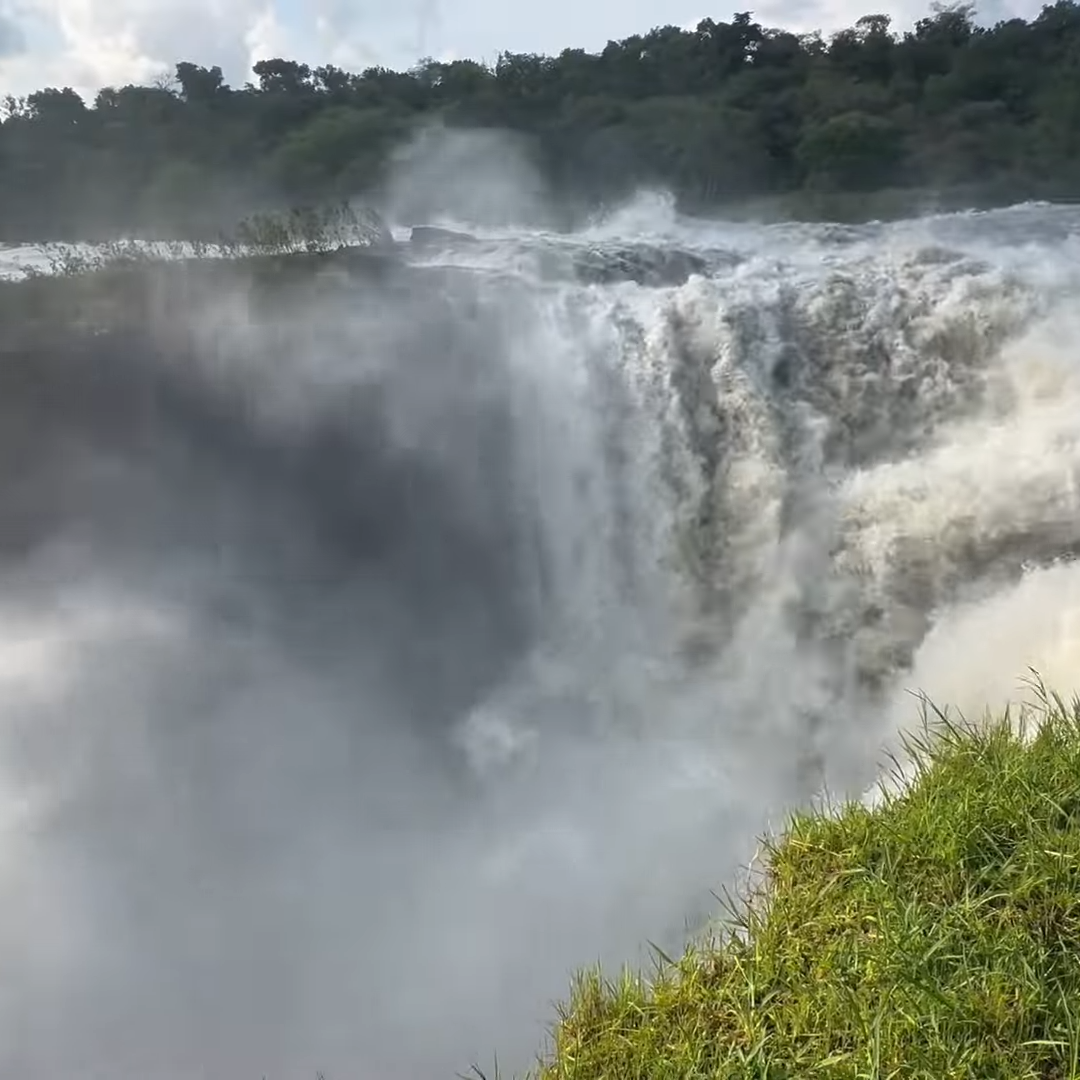Self‑Drive Uganda Safari: embark on an expedition where every mile unfolds a new chapter of adventure. From the red‑dust tracks leading to Murchison Falls’ thunderous plunge to the mist‑clad trails of Bwindi Impenetrable Forest, you’ll command a rugged 4×4 and tailor every moment of your journey. No longer confined to rigid itineraries or crowded game drives, you’re free to linger over a leopard sighting in Queen Elizabeth National Park, linger with chimpanzees in Kibale’s emerald canopy, or chase Uganda’s iconic Big Five on your terms.
Uganda, rightly nicknamed the “Pearl of Africa,” boasts unparalleled biodiversity: sprawling savannahs alive with herds of buffalo and elephant, winding rivers that cradle hippos at dawn, and ancient forests echoing with the calls of rare primates. This guide distills decades of local expertise into one power‑packed resource. We’ll walk you through crafting a personalized route, from quick 2‑day escapes to epic week‑long circuits; selecting the ideal 4×4 rental with roof‑top tents and GPS; and mastering essential driving skills, from tackling slippery tracks to navigating left‑hand traffic.
But it’s not just about the road, our insider tips reveal how to secure gorilla permits (often selling out months in advance), optimize your budget with savvy lodging and vehicle‑rental hacks, and stay safe with up‑to‑the‑minute advice on park regulations and seasonal weather patterns. Along the way, you’ll gain confidence in reading wildlife behavior, honing your photography skills, and connecting authentically with local communities.
Whether you’re a first‑time overlander or a seasoned self‑driver, this Ultimate Guide to a Self‑Drive Uganda Safari arms you with the knowledge and tools to transform ambition into action, and every stretch of Ugandan wilderness into a story you’ll tell for years to come.
Why Choose a Self‑Drive Uganda Safari?
Embarking on a Self‑Drive Uganda Safari is more than a trip; it’s your odyssey through Africa’s most biodiverse landscapes, on your schedule and at your pace. Below, discover the compelling reasons that set Uganda apart as the ultimate self‑drive destination.
Unmatched Freedom & Flexibility
Total Control of Your Itinerary
- Stop on a Whim: Pause at a family of elephants bathing in the Nile—no group approval needed.
- Custom‑Length Drives: Turn a quick 3‑hour game drive into an all‑day photo marathon when the light’s perfect.
Adaptive Travel
- Weather‑Proof: If June’s rains bog down one park, detour to the drier southwest circuit immediately.
- Local Festivals: Dive into the Alur Cultural Festival in Nebbi District when you hear the drums—no need to call ahead.
Did you know? Over 65% of our self‑drive guests choose to extend at least one park stay because they found wildlife so captivating—and they can, because they’re not on a set tour timeline.
Cost‑Effective, Value‑Packed Adventure
Savings That Add Up
- Self‑Drive Rates: From $50/day all‑inclusive (vehicle, insurance, roadside support).
- Guide‑Inclusive Tours: Generally $120–150/day, plus 15% tipping.
Budget Flexibility
- Accommodation Range: Mix luxury lodges ($200+) with community‑run campsites ($15–30).
- Experience-Focused Spending: Reallocate savings to top experiences like gorilla permits ($800) or a sunset boat cruise ($25).
- Bundle & Save: Combine your 4×4 rental with park permits via our Smart Explorer Package and save up to 10% off total costs.
Authentic Cultural Immersion & Hidden Treasures
Village Pit Stops
- Share stories over matoke: Enjoy a roadside meal with a local family near Fort Portal.
- Traditional crafts: Witness bark‑cloth weaving in Bunyoro and take home a one‑of‑a‑kind souvenir.
Secret Scenic Spots
- Nyero Rock Paintings: Discover this prehistoric gem without another vehicle in sight.
- Crater lakes: Uncover hidden lakes perfect for a private picnic at sunrise.
Pro Insider Tip: Ask for directions to the “lost” crater lake between Kabale and Kisoro, you’ll often have the place to yourself.
Uganda’s Compact, Biodiverse Playground
Multiple Ecosystems in One Loop
- Northern Circuit (7 days): Kidepo Valley’s predators to Murchison Falls’ big game to Ziwa Rhino Sanctuary.
- Southwestern Circuit (5 days): Queen Elizabeth’s tree‑climbing lions to Bwindi gorillas to Lake Mburo’s zebras.
Light Traffic, Heavy Wildlife
- Fewer Tourists: Parks see 30–50% fewer vehicles per day than Kenya or Tanzania equivalents.
- Wild Moments: Share a waterhole with 100+ buffalo, often with zero other tourists in sight.
- Wildlife Density Fact: Queen Elizabeth NP harbors over 2,000 hippos along the Kazinga Channel, one of the world’s densest populations.
Expert Support & Peace of Mind
24/7 Roadside Assistance
- From minor punctures to GPS troubleshooting, we’re just a call away.
Detailed Pre‑Trip Briefing
- Customized maps tailored to your route.
- Seasonal road‑condition alerts to help you plan detours.
- Local SIM‑card setup with data and emergency contacts preloaded.
Accreditations & Partnerships
- Member of the Uganda Tourism Board.
- ISO‑certified vehicle maintenance protocols for safety and reliability.
- Partner garages and mechanic workshops in every major park and town.
Planning Your Self‑Drive Uganda Safari: The Essentials
A successful Self‑Drive Uganda Safari begins with thoughtful, detail-oriented preparation. From understanding the best time to travel and selecting the right vehicle to securing permits and knowing what to pack, these essentials help you avoid costly mistakes and ensure a smooth, safe, and unforgettable overland journey through Uganda’s remarkable landscapes.
Best Time to Travel
The most favorable months for a Self‑Drive Uganda Safari are during the two dry seasons:
- December to February
- June to August
These months offer clearer skies, improved road conditions, and excellent wildlife sightings as animals gather at waterholes in parks like Queen Elizabeth, Murchison Falls, and Kidepo Valley.
Shoulder Season Tip: September and October have fewer tourists and still-manageable roads—ideal for those wanting a quieter safari.
Avoid: March–May and late October–November unless you’re highly experienced. These rainy months can make even 4×4 travel risky in remote areas.
Plan with seasonal weather in mind, especially for mountainous or less-traveled routes.
Accommodation & Camping Options
Uganda offers a wide range of stay options to suit all budgets and preferences.
- Lodges & Guesthouses: Ideal for mid-range to luxury travelers.
- Public Campsites & Community Lodges: Affordable, immersive, and found in most parks.
- Rooftop Tent Camping: Combines mobility and savings with an unforgettable wilderness experience.
Car Rental Road Trips can help you secure well-located accommodation at no extra cost when you book a vehicle, ensuring you’re close to wildlife corridors and park gates.
Choosing the Right Vehicle
Your vehicle choice can make or break your Uganda self-drive safari. Contact us for our Jeep options
- Must-Have: A high-clearance 4×4 for off-road parks like Bwindi, Kidepo, and Semuliki.
- Recommended: Toyota Land Cruiser, Prado, or Hilux.
- Avoid: Small SUVs like the RAV4 for extended or rugged trips—suitable for urban areas or Lake Mburo only.
Pro Tip: Opt for a rental with a rooftop tent and camping gear for cost savings and flexibility.
Non-Negotiables: Ensure your 4×4 has air conditioning, spare tires, a jack, recovery tools, and a tow rope, critical for Uganda’s variable terrain.
Permits & Documentation
Be fully documented before setting off on your Uganda 4×4 safari:
Driver Requirements:
- Valid national driver’s license
- International Driving Permit (IDP)
Park Permits:
- National Park Entry: $40–$50/day for non-residents
- Gorilla Trekking Permit: ~$800 (book months in advance)
- Chimpanzee Tracking Permit: Limited and best reserved early
Many reputable rental companies (like Car Rental Road Trips) assist with permit acquisition. Confirm this early to avoid last-minute roadblocks.
Essential Packing Guide
Smart packing is key to comfort, safety, and preparedness while exploring Uganda by 4×4.
- Light, breathable clothing for day; warm layers for chilly nights
- Sturdy hiking boots, hat, and sunglasses
- Bug repellent, sunscreen, personal first-aid kit
- Power bank, car charger, flashlight/headlamp
- Reusable water bottle and water purification tablets
- Binoculars and camera gear for wildlife and landscapes
- Copies of key documents (license, permits, passport)
Being prepared enhances both your safety and your experience in Uganda’s diverse environments.
Self-Drive Safari Essential Packing Checklist
Understanding Uganda’s Road Conditions
Uganda’s road network spans a wide range of conditions—from newly paved highways to rough, ungraded rural tracks. While the major roads connecting Kampala to destinations like Murchison Falls, Fort Portal, and Mbale are steadily improving, many feeder and park access roads remain rugged and uneven.
Expect:
- Potholes, loose gravel, and dusty trails
- Frequent speed bumps, locally nicknamed “sleeping police officers”
- Mud and washouts during the rainy seasons (March–May and October–November)
Pro Tip: Always rent a 4×4 high-clearance vehicle to confidently handle deep ruts, unexpected water crossings, and unpaved roads, especially when visiting remote parks like Kidepo or Semuliki.
Traffic Behavior & Defensive Driving
Driving in Uganda means sharing the road with everyone, pedestrians, cattle, boda-bodas (motorbike taxis), bicycles, and fast‑moving minibuses.
Essential Defensive Driving Tips:
- Stay alert and scan constantly, expect the unexpected.
- Use mirrors frequently and maintain moderate speed.
- Give right of way generously; many drivers rely on mutual courtesy.
- Watch for unpredictable moves by boda-bodas, especially near intersections.
- In Kampala/Entebbe traffic: lock doors and keep windows rolled up.
Local Tip: If someone overtakes on a blind corner, slow down and let them pass. It’s common driving etiquette in Uganda.
Police Checkpoints & Road Stops
You’ll encounter routine police stops, especially near towns, highways, and park entrances. These are typically calm and friendly.
What to Do at a Checkpoint:
- Pull over slowly and respectfully.
- Greet officers politely
- Present your driver’s license, rental contract, and insurance.
- Keep these documents handy in your glovebox.
Be Aware: If unofficial “fines” are hinted at, remain calm. Ask for written clarification or a supervisor. Avoid arguments and notify your rental provider if needed.
Navigation: GPS & Offline Map Tools
Uganda’s remote areas often lack mobile data or signage. Reliable navigation is critical on a self-drive safari.
Recommended Navigation Setup:
- A dedicated GPS unit (ask your rental provider).
- Offline maps downloaded via Google Maps or Maps.me.
- A printed map or road atlas as a backup.
This triple-layer system keeps you covered even in deep wilderness zones with zero signal.
Fueling Up & Emergency Supplies
Fuel stations are limited outside major towns. Don’t risk running out in remote areas like Kidepo or Queen Elizabeth’s backroads.
Stay Prepared:
- Top up when your tank drops below half.
- Carry a jerrycan with extra fuel for long hauls.
Pack Essential Gear:
- Plenty of bottled water and a portable water filter
- Non-perishable snacks: canned food, dried fruit, protein bars
- First-aid kit, antiseptic, mosquito repellent
- Spare tire, tool kit, shovel, headlamp or flashlight
Being well-equipped can turn a potential setback into a minor delay, and may even save your trip.
Wildlife Encounters & Park Etiquette
Uganda’s national parks offer breathtaking opportunities for wildlife viewing. But with this privilege comes responsibility. Park rules aren’t just regulations; they’re vital to your safety and the conservation of fragile ecosystems.
Rules of the Wild (UWA Guidelines)
Here are the key rules to follow on your drive-yourself safari:
- Stay inside your vehicle unless marked safe zones are present
- Do not lean out of windows to take pictures, as animals can react unpredictably
- Never feed wildlife, even seemingly friendly monkeys or birds
- Obey park speed limits, typically max 40 km/h
- Keep a safe distance from all animals, especially predators and elephants
Penalty Examples from Uganda Wildlife Authority (UWA)
Reminder: Rangers may be stationed along popular routes and may inspect vehicles for compliance. Always be respectful and cooperative.
Uganda Safari Costs: How to Budget for Your Self-Drive Adventure
- Vehicle Rental Rates: Prices start at $50/day for a basic 4×4.
- Park Permits: Gorilla permits cost $800 per person, and park fees range from $30 to $50.
- Accommodation: From $20 for budget camping to $300+ for luxury lodges.
Book Your Self-Drive Safari with Car Rental Road Trips
Why Book with Us?
Car Rental Road Trips specialises in providing reliable 4×4 vehicles for your Uganda safari. Our team is dedicated to making your self-driving experience seamless with round-the-clock support, detailed maps, and flexible rental options.
Easy Online Booking for Stress-Free Planning
Our streamlined booking platform lets you choose your vehicle, customize your itinerary, and confirm your safari all in a few clicks.



